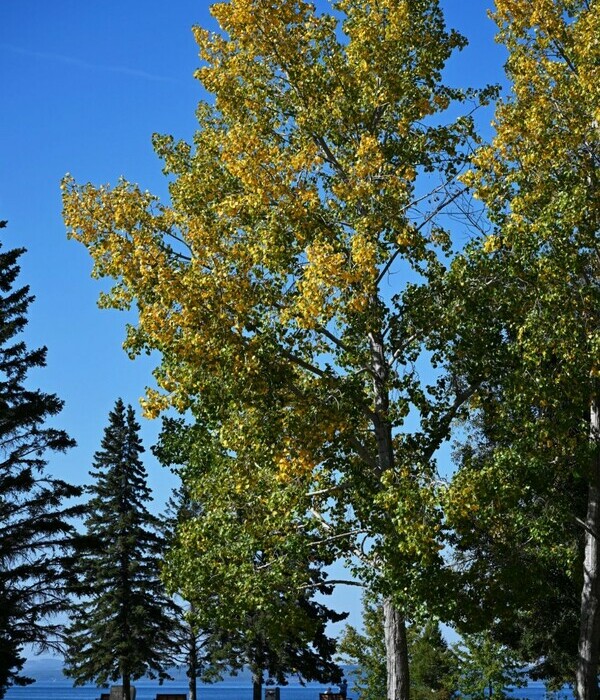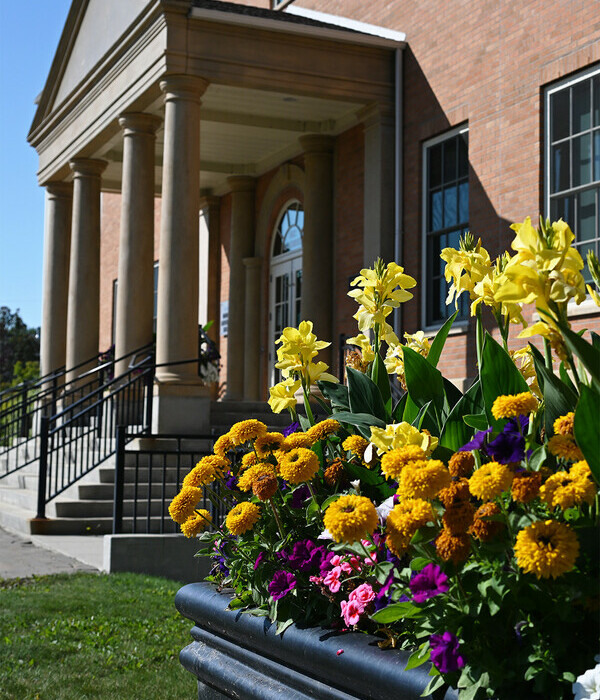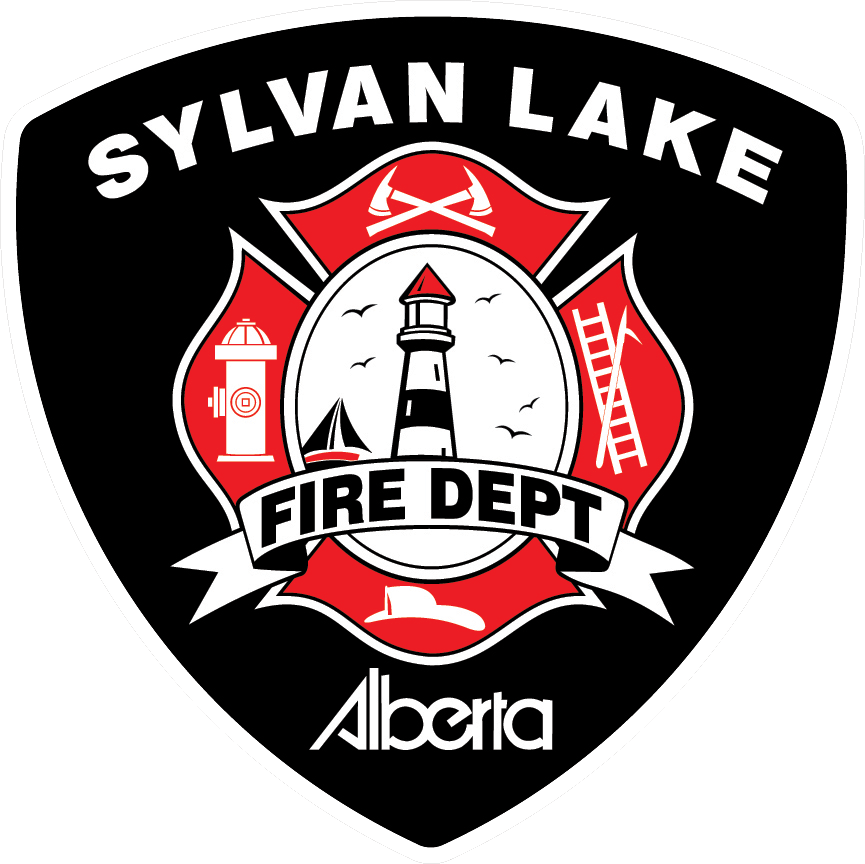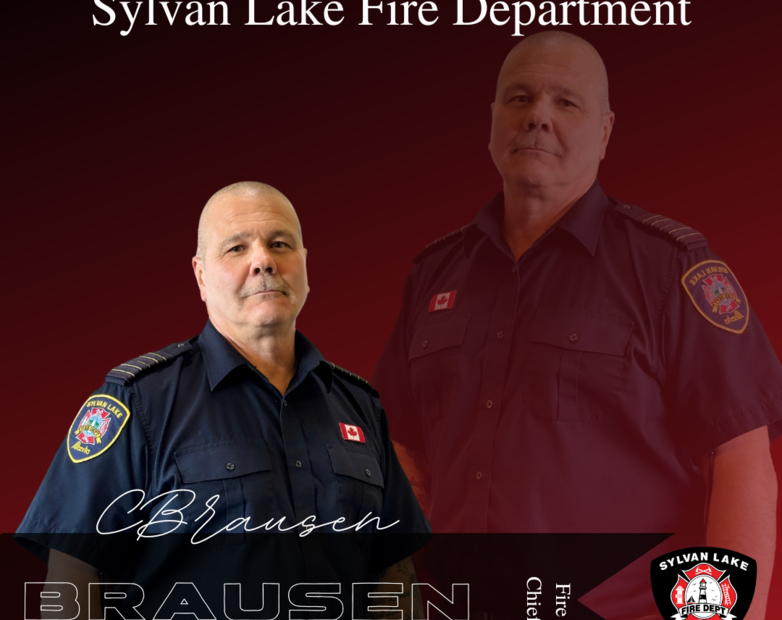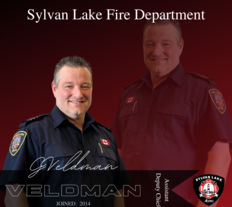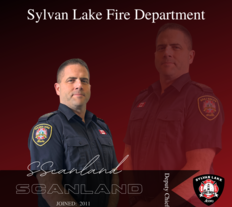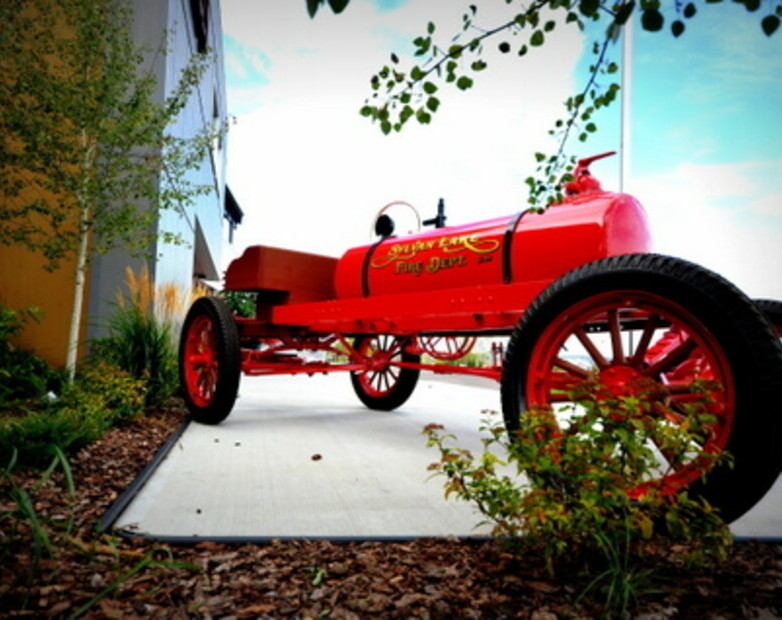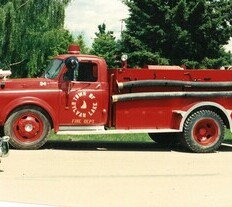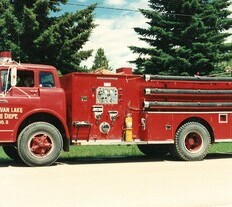The Sylvan Lake Fire Department is committed to providing fast, professional, and effective fire protection and public safety services for all residents and visitors in Sylvan Lake and the surrounding areas.
These services include fire suppression, rescue operations, fire prevention, safety inspections, fire training, first medical response, and pre-incident planning.
Our priority is to work efficiently while ensuring the safety of our firefighters and the community. We are dedicated to protecting lives, property, and the environment for everyone who lives, works, or visits Sylvan Lake and its surrounding areas.
Community Connect

Sylvan Lake residents and business owners can help protect their home, business, belongings, family, and staff by signing up for Community Connect—a free, secure, and user-friendly platform. This service allows you to share important information about your home or workplace with first responders, helping them respond more effectively during an emergency.
Your Information is Secure & Voluntary
✔All data is secure and used only to assist emergency personnel in keeping you safe.
✔Participation is completely voluntary—share only the details you're comfortable with.
Be Prepared, Stay Safe
Signing up for Community Connect helps first responders assist you more efficiently—whether at home or work. Take a few minutes to update your information today and help keep your community safer!
LEARN MORE – Sylvan Lake Community Connect
Have questions? Email us at communityconnect@sylvanlake.ca
- Sign up for free – All you need is your email, phone number, and address to get started.
-
Share important details – Enter key information that can help first responders assist you more effectively during an emergency.
-
Help Sylvan Lake Fire Department when seconds matter – Just update your information as things change so emergency crews can always be prepared.
Your information can make a life-saving difference!
LEARN MORE – Sylvan Lake Community Connect
Have questions? Email us at communityconnect@sylvanlake.ca
Community Connect provides first responders with vital information to better protect your home, business, and loved ones during an emergency. By sharing important details about your property, family, or workplace, you can help emergency personnel make informed decisions and respond more effectively.
Your Property
- Providing details about your home—such as residence type, fire sprinklers, or designated meeting places—helps first responders make faster, better-informed decisions during an emergency.
Your People
- Let us know who to contact in an emergency. These contacts can assist with access, potential hazards, or locating occupants, improving communication when it’s needed most.
Your Needs
- If you or a family member has mobility challenges or other functional needs, sharing this information allows emergency personnel to plan ahead and respond more quickly.
Your Pets
- Your pets are part of the family too! By providing details—and even uploading a photo—first responders can ensure they are safely evacuated and cared for during an incident.
LEARN MORE – Community Connect
Have questions? Email us at communityconnect@sylvanlake.ca
Equip first responders with critical details about your business, school, senior care facility, or public space to improve emergency response times and keep people safe.
Your Emergency Plans
Upload emergency plans, images, and documents so first responders know your procedures for different situations. This helps ensure that staff and visitors follow the right safety protocols.
Your People
If anyone at your facility has mobility challenges or special needs, providing this information allows first responders to offer assistance faster and more effectively.
Your Property Details
Keep emergency crews informed about:
✔Building access points
✔Utility shutoffs
✔Fire suppression systems
✔Hazardous materials on-site
LEARN MORE – Sylvan Lake Community Connect
Have questions? Email us at communityconnect@sylvanlake.ca
Services at this location:
- To report an EMERGENCY, Call 911
- For a NON-EMERGENCY inquires, please email slfd@sylvanlake.ca or call 403-864-5090 and leave a message (if after hours)
- Fire Department: Protecting life, property and the environment, safety education, Fire Hall tours (updated form coming soon!)
Administration
-
Hours of Operations
- Monday - Friday 8 a.m. - 4 p.m.
- Closes Statutory Holidays
-
Contact Information
- EMERGENCIES, Call 911
- Administration Main Phone Line: 403-864-5090
- Administration Email:slfd@sylvanlake.ca
- Social Media
The Sylvan Lake Fire Department operates from a single station equipped with modern and up-to-date trucks and tools. The team includes one full-time fire chief, one full-time deputy fire chief, one full-time assistant deputy fire chief, and 30 paid-on-call firefighters.
The SLFD serves an area of approximately 466 square kilometers , which includes the Town of Sylvan Lake, a portion of Red Deer County, Lacombe County, and the summer villages of Norglenwold, Jarvis Bay, Halfmoon Bay, and Birchcliff.
We also provide mutual aid response to nearby communities on per request.
1924 to 1954
- The Alexandra Hotel burns down in 1924, 14 years later a fire wipes out seven businesses in an area that is now the Cobbs Block.
- The Village council provide the department with a Fire Wagon in 1925
- In 1939, the first volunteer fire brigade consists of seventeen personnel.
- An Air Force crash truck was purchased and then modified with two-tonne Dodge truck in 1947.
1955 to 1985
- The department grows in 1957, to 21 members.
- A Fire wipes out Prom Hall and a popcorn stand in 1959. That same year, the brigade grows to 24 members.
- In 1968, the community purchases a King Seagrave Fire Truck for $22,710. The department also receives a Certificate of Merit from the Province.
- In 1973, the department is featured in Firefighting in Canada Magazine with the opening of a new Fire Hall located at 4916 - 50 Avenue. Sylvan Lake also hosts the Annual Firemen's Provincial Conference.
- The department replaces the old two-tonne Dodge in 1980, with the purchase of a Superior Fire Engine for $72,980.
- The Town of Sylvan Lake and Red Deer County enter into an agreement for fire protection and apparatus in 1981.
1986 to 2006
- Sylvan Lake Fire Department fleet in 1990
- In 1990, the Town purchases a custom build Rescue Truck for $26,000.
- The 1969 King Seagrave is replaced with the purchase of current Engine 2 from Superior Equipment in 1991, for a cost of $224,700.
- Construction starts on a five-bay fire hall located at 4301 - 47 Avenue in 1996.
- In 1997, the purchase of the current Rescue from Superior Equipment replaces the custom build Rescue Truck.
- The new fire hall on 47 Avenue opens in 1997.
- The first Thermal Imager is purchased for the department in 2001.
- Also in 2001, the 1980 Ford Superior Fire Engine is replaced with a 2001 current Engine 1 from Superior Emergency for a cost of $320,000.
- In 2002, Red Deer County replaces the County Engine with the current Engine 3 from Superior Emergency, and the Town purchases the current Rapid, a Ford F550 from Phoenix Emergency.
- In 2005, the Town purchases Ford F150 for Utility truck.
- The first appointment of a career Fire Chief was in 2005.
2007 to Current
- A fire in 2007, wipes out Sylvan Lake Steam Baths
- The fleet of Sylvan Lake Fire Department in 2009
- The Town purchases the current Tender from Rocky Mountain Phoenix
- The Town purchases the current Utility, a Dodge 1500 in 2011.
- The first appointment of a career Deputy Chief was in 2011.
- In 2012, the Town purchases land at #2 Beacon Hill Dr. for the construction of the current fire hall,
- Construction on the new fire hall starts in 2014.
- In 2016, the Town purchases current Squad 2, a 2016 Ford F150
- In 2016, the new, eight bay fire hall opens for operation, and the Town purchases Tower 1, a 2016 Pierce Velocity.
- Red Deer County Fire provided a UTV vehicle for off road access in 2016
- In 2017, the Town purchases current Rescue, a 2017 Pierce Velocity walk around
- In 2017, the Town purchases current Squad 1, Utility is replaced.
- In 2019, the Town purchases a Support Trailer.
- In 2020, the Town purchases current Engine 2, a 2020 Pierce Velocity Pump
- Red Deer County Fire provided a Wildland apparatus in 2020
- Red Deer County Fire provided a Tender apparatus in 2021
- 2022 was the purchase of a 4 story, 3200ft2 Fire Training Centre, with assistance of amazing sponsor Marchant Crane Inc.
- The first appointment of a career Assistant Deputy Chief was in 2024.
Recognition (Awards)
Our Fire Department has had many members recognized for their service and has named a Firefighter of the Year since 1985. Learn about them below!
2021 to 2030
2024 - A. Benum
2023 - C. Wells
2022 - A. Tucker
2021 - H. Gray III
2011 to 2020
2020 - D. Walker
2019 - G. Veldman
2018 - R. Tucker
2017 - S. Slimmon
2016 - D. Powell
2015 - K. Burgess
2014 - B. James
2013 - R. Mach
2012 - G. Simpson
2011 - J. Fifield
2001 to 2010
2010 - T. Swanson
2009 - W. Schatz
2008 - D. Spencer
2007 - J. Moulton
2006 - J. Seifert
2005 - B. Campbell
2004 - R. Jaap
2003 - T. Somerville
2002 - P. Chiasson
2001 - S. Scanland
1991 to 2000
2000 - R. Taylor
1999 - J. Becker
1998 - J. Dillich
1997 - H. Johannson
1996 - C. Brausen
1995 - J. Elliott
1994 - D. Cerin
1993 - J. Watson
1992 - B. Hainsworth
1991 - L. Grahame
1985 to 1990
1990 - R. Girard
1989 - D. May
1988 - D. Benson
1987 - D. Chilibeck
1986 - B. Pickering
1985 - T. Hein
The medal honours members of a Canadian fire service with over 20 years of service, with 10 years involving duties with potential risk.
The Chancellery of Canadian Orders awards this medal. Awards are made on behalf of the Sovereign by Instruments signed by the Governor General. The Lieutenant Governor presents the medals to all recipients.
2020 to Present
2023 - D. Spencer (30 year service bar)
2021 – S. Scanland (20 year service medal)
2010 to 2020
2014 – C. Brausen (20 year service medal)
2013 - D. Spencer (20 year service medal)
The Alberta Emergency Services Medal (AESM) honours emergency services personnel who are involved in supporting emergency prevention, preparedness and response in Alberta, and who have committed 12, 22, 32, 40 years of service.
2020 to Present
2024 – J. Morgan (12 year service medal)
2023 – S. Scanland (22 year service bar)
2010 to 2020
2021 – D. Walker (12 year service medal)
2021 – M. Downey (12 year service medal)
2021 – R. Mach (12 year service medal)
2020 – T. Swanson (12 year service medal)
2019 – R. Tucker (12 year service medal)
2019 – B. James (12 year service medal)
2017 – J. Moulton (12 year service medal)
2016 – C. Brausen (22 yeas service bar)
2016 – J. Fifield (12 year service medal)
2015 – D. Spencer (12 year service medal)
2013 – S. Scanland (12 year service medal)
2013 – W. Schatz (12 year service medal)
2012 – J. Seifert (12 year service medal)
2011 – T. Somerville (12 year service medal)
2000 to 2010
2008 - B. Campbell (12 year service medal)
2006 - C. Brausen (12 year service medal)
Lost but not forgotten – Firefighter J. Manson – January 16, 2023
The City of Red Deer Emergency Services provides our 9-1-1 Emergency Communications Centre.
Visit their website to learn more about who they dispatch for and important information about calling 9-1-1.
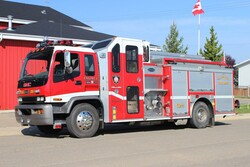
Engine 1 is a 2002 Superior/GMC 8500 engine with a 6000 LPM Pump and a 3636 litre tank. (SN#SE2718)
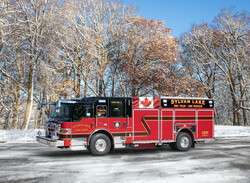
Engine 2 is a 2020 Pierce Velocity 7010, 525hp Engine with a 8000 LPM pump and a 3864 litre tank. (SN#33998)
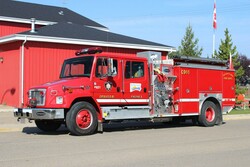
Engine 3 is a 2005 Freightliner FL80/Superior engine with a 4000 LPM pump and a 4318 litre tank. (Owned by Red Deer County)
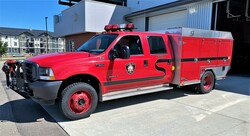
Rapid is a 2002 Rocky Mountain Phoenix/Ford F550 mini-pumper
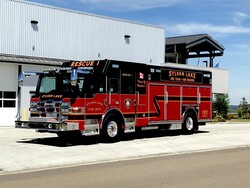
Rescue is a 2017 Pierce Velocity 8420 Walk Around Rescue (SN#30417)
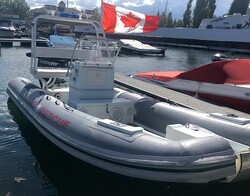
Rescue Boat is a 2012 Nautica RIB 20 CAT with 150Hp Mercury Outboard
Squad 1 is a 2023 Dodge Ram 1500 Quad Cab
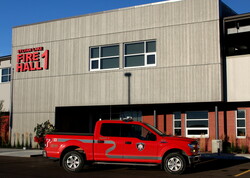
Squad 2 is a 2016 Ford F150 Quad Cab
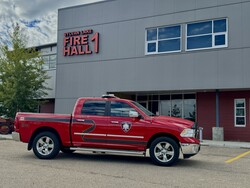
Squad 3 is a 2017 Dodge Ram 1500 Quad Cab
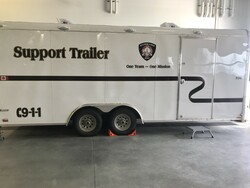
Support Trailer is a 2014 Cargo Mate 24ft Enclosed Trailer with 4 bottle cascade and fill station for SCBA
Tender is a 2014 Freightliner M2 106 - Midwest Fire Tender with a 5000 LPM pump and a 11356 Litre tank. (Owned by Red Deer County). This Water Tender is mainly used for water shuttle and relay operations in our rural response area.
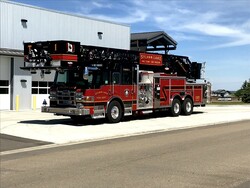
Tower 1 is a 2016 Pierce Velocity 7010. 100' platform, 550hp Engine with a 8000 LPM pump. (SN#29666). A response for this truck is generally to the large incidents or a large building. However, with a 1135 Litre water tank on board, it can manage the small fires as well.
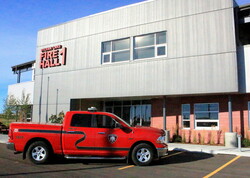
Utility is a 2011 Dodge Ram 1500 Quad Cab for support at any incident and for general-purpose, day-to-day operations.
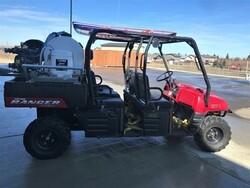
UTV is a 2009 Polaris Ranger 700 4X4 with skit unit (Owned by Red Deer County). The apparatus carries 227 Litres of water, an onboard Honda Striker portable pump and is fully equipped to fight wildfire incidents. This apparatus is used for remote access in our district for medical emergencies, rescue calls, wildfires and any other incident where access is difficult.
Wildland is a 2008 Ford F-250 4x4 (Owned by Red Deer County). The truck carries 473 Litres of water, an onboard Honda Striker portable pump and is fully equipped to fight wildfire incidents.
See some of the equipment the Sylvan Lake department used through the years!
2009 Rosenbauer/International 7400 with a 2000 LPM pump and an 11356 litre tank.
1992 Pierce Dash(Cyclone)/Superior Pumper with a 5000 LPM Pump and an 1892 litre tank. (Pierce SN#E6673/Superior SN#SE1232 (Ex-Demo SN#SES081))
2004 Ford F150
1997 International 4700/Superior walk around rescue (SN#SE1727)
1990 Custom Built/Ford rescue truck
1989 Ford F-800/Superior Pumper with a 2365 LPM front mount pump (SN#SE994) (Owned by Red Deer County)
1980 Ford C-904/Superior Pumper with a 3179 LPM pump (SN#SE312) (Sold to Birch Narrow Dene Nation Fire Department)
1968 Ford C-750/King with a 2365 LPM pump (SN#68031)
1954 Dodge/Saskatoon Pumper with a 1589 LPM pump
1928 Model "T" Ford fire wagon
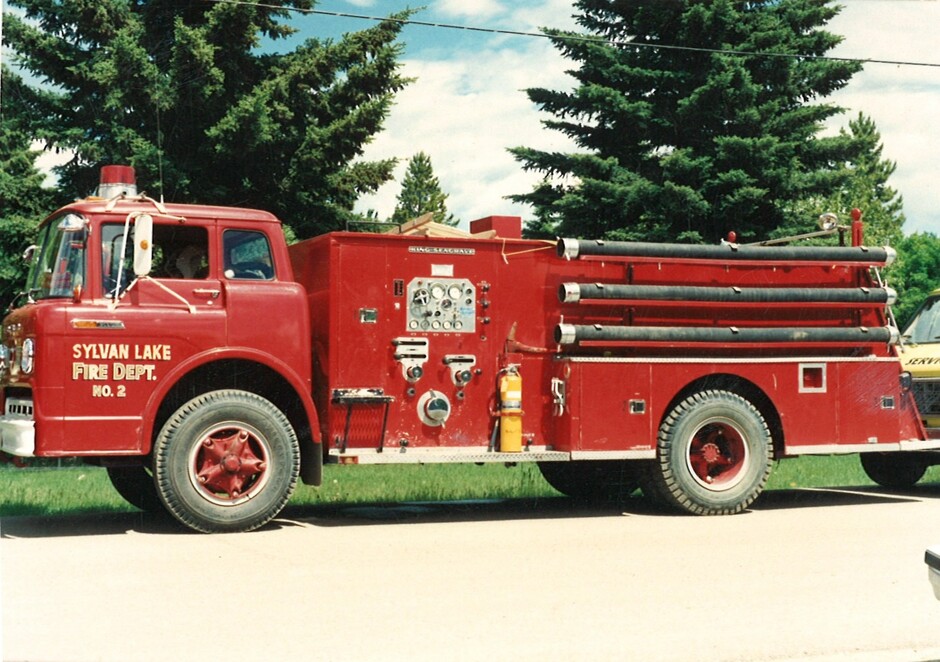
Incident Totals Per Year
(Updated 2025-06-06)
| Year | Total | Year | Total | |
| 2025 | 270 | 2016 | 285 | |
| 2024 | 608 | 2015 | 297 | |
| 2023 | 551 | 2014 | 246 | |
| 2022 | 560 | 2013 | 270 | |
| 2021 | 421 | 2012 | 256 | |
| 2020 | 353 | 2011 | 219 | |
| 2019 | 328 | 2010 | 217 | |
| 2018 | 335 | 2009 | 252 | |
| 2017 | 373 |
Paid on Call Firefighter Recruitment - Now Accepting Applications
Looking for a way to make a difference, take on a challenge, and be part of a team?
Join us as a Paid-on-Call Responder! Discover what our responders do, the qualifications needed, and the benefits of being part of our team. No prior training is needed to get started!
- Minimum 18 years of age;
- Live and /or work in the response area;
- Physically able to perform tasks/duties of the job;
- Respond to calls day and night under stressful and often emotional conditions;
- Give back to the community through their desire to help people in need;
- Face new challenges with courage and dedication;
- Willingly learn new skills;
- Control emotions during times of crisis; and
- Develop a strong sense of accomplishment and passion for their responsibilities within the community.
- Are eligible to apply for positions with the department.
Serious consideration should be given before choosing to apply to be a member of this Fire Department; there are many factors associated with becoming a member. This package has been developed to provide some of the information needed to help you understand this commitment and to assist you in making your decision.
If you have questions about applying to become a Paid-on-Call Responder, feel free to send us an email.
Our application package includes more details about the role and expectations. You can download it online or visit the Fire Hall to pick up a copy. Once you’ve completed the application, you can email it to us or drop it off at the Fire Hall during regular business hours.
Community Safety
Sylvan Lake Fire Department believes that it is vital for fire and safety education to reach all audiences. Watch for our education campaigns throughout the year via our social media. We also provide fire hall tours and school visits with a fire truck throughout the year. Also you can find us out at local community events.
Students, clubs and associations are invited to book a tour of any of our stations. During your tour, you’ll be given the opportunity to learn about safety and view department vehicles that are used daily to help keep you and the community safe. Please note that tours are available for groups ages five and older, and a minimum of 10 people. Spaces available for summer tours are limited.
Visiting the fire hall:
-
Ensure children are escorted and under the supervision of an adult at all times;
-
Tour groups must leave the fire hall in the event the department is dispatched to an emergency;
-
Group transportation must remain on-site at all times;
-
Please do not arrive more than 10 minutes before your scheduled tour;
-
Tour takes approximately 60 minutes;
-
Please contact the department to cancel your tour if you are unable to attend;
To Book A Fire Hall Tour, Please submit the following form: Tour our Fire Hall (updated form coming soon!) and a department representative will contact you by email to confirm. Questions related to this form or a tour? Please email slfd@sylvanlake.ca
Please note:
- Fire stations are active facilities, and emergency services are our top priority. Firefighters may need to leave during your scheduled tour. If this happens, the tour will be cancelled, and everyone must leave the station immediately.
- If you're booking Fire Hall Tours on more than one day for different classes, you’ll need to fill out a separate form for each day requested.
To reschedule, please call 403-864-5090. Please note that the Sylvan Lake Fire Department cannot cover any costs related to the cancellation.
Sylvan Lake Fire Department is proud to support public education and community involvement. If you're part of a community group and would like a fire truck to attend your event/school within the Town of Sylvan Lake, please send us an email slfd@sylvanlake.ca with the following details:
- Contact Name
- Organization
- Contact Phone Number
- Contact Email Address
- Date for request
- Location of event
A member of our team will follow up with you by email to confirm.
Please note: Sending a request does not guarantee attendance. Our top priority is emergency response, so if an incident occurs, we may need to cancel—even on short notice. Unfortunately, we can't cover any costs related to cancellations.
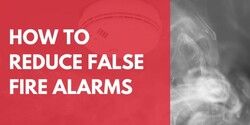
Did you know that around 90% of alarm calls the Fire Department responds to are false alarms?
While the National Fire Code doesn’t require smoke alarms in single-family homes to be monitored, many homeowners choose to have a monitored fire alarm system. If you have one, make sure your monitoring company is instructed to contact you, a designated person, or a trusted key holder to verify the alarm condition and confirm whether it is false or "unwanted."
Reducing false alarms helps keep residents, businesses, and firefighters safe by ensuring the Fire Department is available for real emergencies. The Fire Department prioritizes educating property owners and building managers on preventing false alarms and maintaining their fire alarm systems.
If the Fire Department responds to a second false alarm at the same location within a calendar year, they may issue a fine under Fire Bylaw 1793/2019. However, the decision will depend on the circumstances and the discretion of Fire Department personnel.
The Fire Department encourages you to take these steps to minimize false alarms:
- Regular Maintenance - Keep your fire alarm system in top condition with regular maintenance and testing, as outlined in CAN/ULC-S536 (Standard for inspecting and testing fire alarm systems). Notify your alarm company before testing, repairing, or replacing batteries in your system. At home, clean your smoke detectors regularly using a vacuum to remove dust.
- Plan Ahead - If you're doing activities like soldering, welding, spray painting, or sanding that produce visible dust or vapors, they could trigger your smoke detector. Notify your alarm monitoring company in advance to prevent unnecessary alarms.
- Proper Installation and Care - Ensure your fire alarm equipment is installed correctly and handle it with care. Report any damages to your alarm service company and schedule repairs with a certified technician.
- Update Contact Information - Make sure your alarm monitoring company has your current contact information to avoid delays or issues in managing your system.
If your home fire alarm system is triggered by accident, immediately contact your alarm monitoring company to report the false alarm and explain the situation.
Important to Know: Entering a code on your alarm panel may not stop the fire department from responding.
If your fire alarm system is activated and you’re unsure why:
-
Do not reset the fire alarm system.
-
Evacuate the building according to your Fire Safety Plan.
-
Call 911. The Fire Department will investigate the cause of the activation and ensure the building is safe before anyone re-enters. The building owner or responsible party will be informed of any necessary actions to resolve the issue.
Malicious Fire Alarm Activations
Deliberately triggering a fire alarm without cause is a criminal offense under Section 437 of the Criminal Code of Canada and may result in charges.
Inspections, Fire Codes, Permits (Fire Safety Plans)
The Sylvan Lake Fire Department’s Fire Inspections team is here to help with fire permit approvals, occupancy limits, and safety inspections. We make sure public places like restaurants, bars, and special events follow the rules in the National Fire Code (Alberta Edition).
The Sylvan Lake Fire Department ensures that commercial buildings in the Town of Sylvan Lake meet the safety standards outlined in the Fire Code.
Booking a Fire Inspection as a Business
To book a fire inspection, please:
- Use our Pre-Inspection Checklist located below to ensure your location is ready for inspection.
- Each business requires to register the property on Community Connect through though portal Sylvan Lake Community Connect
Important Notes:
-
Inspections must be booked 1-2 weeks in advance.
-
A department member will confirm your booking via the Community Connect program.
For Questions or Assistance:
-
Phone: 403-864-5090
Helpful Resources
We’ve created checklists to help ensure your business complies with the Fire Code. Select the checklist that applies to your business:
The Sylvan Lake Fire Department requires all food trucks operating within the Town of Sylvan Lake to undergo a fire inspection. A compliance certificate or report from another Alberta fire department, issued within the past 12 months, will also be accepted. You can send this certificate or report to slfd@sylvanlake.ca.
Fire Safety Requirements for Mobile Food Truck Operating in the Town of Sylvan Lake (link)
If you do not have a compliance certificate/report from another municipality, please contact the fire department at 403-864-5090 or at slfd@sylvanlake.ca.
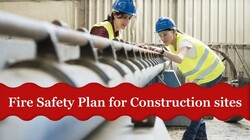
The National Fire Code (Alberta Edition) requires a fire safety plan for any building or part of a building that is under construction or demolition, including single-family homes. This plan must be submitted and approved in writing before work begins.
The responsibility for maintaining the fire safety plan rests with the owner, developer, or contractor until the building is fully occupied.
Starting construction or demolition without an approved fire safety plan is against the law. Doing so may result in a stop-work order, the removal of completed work, or legal action under the Safety Codes Act.
What type of fire safety plan is needed?
For projects under $5,000, no fire safety plan is required
General Small Building
This fire safety plan is specifically for use in single-family, semi-detached, or duplex residential buildings. Builders can use a single generic fire safety plan that applies to the entire Town.
Our Fire Safety Plan is a fillable form that must be submitted to the fire department. A Fire Safety Codes Officer will review the form, and a digital approval will be sent to the owner, developer, or contractor who submitted it. A copy of the approval will also be forwarded to the Planning and Development office to complete the Building Permit and/or Development Permit process.
Builders must make copies of the approved fire safety plan and ensure one is posted on-site for each building. Only this specific template will be accepted for review.
Safety Measures
Minimum safety measures at construction or demolition sites include
- All hydrants must be operable and kept free from obstructions
- Standpipe connections must be identified and accessible
- Site must be kept clear of combustible debris
- Site must be secured
- Contractors must provide fire extinguishers at accessible locations
For questions or additional information, contact the fire department at slfd@sylvanlake.ca.
Small Buildings & Minor Renovations Including Single Family Dwellings
Customized Site Specific (Large Buildings & Multi-Residential)
The required fire safety plan must include details about safety measures for hot works and hot surface applications.
Our Site-Specific Fire Safety Plan is a fillable form that must be submitted to the fire department. A Fire Safety Codes Officer will review the form, and a digital approval will be sent to the owner, developer, or contractor who submitted it. The approval will also be forwarded to the Planning and Development office to complete the Building Permit and/or Development Permit process.
Builders are responsible for making copies of the approved fire safety plan and ensuring one is posted on-site for each building. Only this specific template will be accepted for review.
Safety Measures
Minimum safety measures at construction or demolition sites include
- All hydrants must be operable and kept free from obstructions
- Standpipe connections must be identified and accessible
- Site must be kept clear of combustible debris
- Site must be secured
- Contractors must provide fire extinguishers at accessible locations
For questions or additional information, contact the fire department at slfd@sylvanlake.ca.
The Sylvan Lake Fire Department works in partnership with Sylvan Lake businesses and building owners/managers to ensure the safety of employees, customers and other members of the public.
Fire Safety System (Life Safety Systems)
Fire safety systems are installed into buildings to help protect people and buildings from fires. They include but are not limited to portable fire extinguishers, sprinklers and fire extinguishing systems, fire alarms and their systems. Fire safety systems are also known as life safety systems and fire protection installations.
When should a system be replaced?
Fire safety systems have to be inspected regularly, as per the National Fire Code (Alberta Edition), by a qualified service company. When a service company completes an inspection they will create a service report that will contain their findings. These reports must be kept on site for two years and be readily available for examination by a Fire Safety Codes Officer.
What is a deficiency?
Deficiencies are problems with the system that MUST be corrected according to the National Fire Code, Alberta Edition. They differ from recommendations which are suggestions on how you can improve your fire protection system and recommendations are not mandatory.
When do I report deficient systems?
What happens after a report is filed?
Are there consequences for not complying?
What is in a service report?
Service reports of a fire safety system will include:
- Building Address
- Inspection and testing date
- Testing Standard
- System Status (fully functional or system has deficiencies)
- Deficiencies
- Recommendations (reported on a separate page)
Fire Doors
- Fire doors help protect people and property – and could save your life.
- Should a fire occur, they provide a way out of a building and also slow the spread of flames and smoke.
- If fire doors are left open, smoke and heat can travel very quickly throughout a building and may prevent you from exiting safely. By keeping them closed, you help ensure your safety and that of others.
- Look around. Take note of the fire doors in your building and know your fire escape plan.
Office Decorations
Holiday seasons and special occasions can increase fire risks at home and in the workplace. To keep everyone safe, businesses must follow these regulations for festive decorations:
- Crepe paper, ornaments, and trimmings, including natural and artificial Christmas trees, must be flame-resistant. Decorations must either be naturally flame-resistant or treated with an approved flame-retardant material.
- Natural Christmas trees are considered flame-resistant if they are freshly cut (harvested within 14 days) and the base is kept in freshwater. These trees must be removed from the building within 14 days.
- Fresh Christmas trees that retain their natural moisture pose minimal fire risk. However, dry trees can become extremely flammable. If ignited, they burn rapidly and intensely, often appearing to "explode" and be consumed in seconds, leaving only the trunk behind.
Following these rules can help ensure a safer environment during the holidays.
The Sylvan Lake Fire Department works in partnership with Sylvan Lake businesses and building owners/managers to ensure the safety of employees, customers and other members of the public.
Fire Inspections and Investigations offers a number of useful programs and practices to building and business owners/managers in the interest of fire safety and education.
For more information about fire and life safety for businesses, explore this site.
Lockbox requirements
A lockbox allows emergency responders to quickly access a building in case of an emergency. It should contain all the keys or devices needed to enter the building and operate the Fire/Life Safety Systems. Each key or device must be on a key ring with a tag clearly identifying its purpose. Lockboxes should be installed on the outside wall of the building, near the main entrance.
All buildings that require a lockbox must install a SUPRA Smart Vault. This Town of Sylvan Lake-approved box provides increased security and other benefits.
A lockbox needs to be installed on a building with any of the following:
- A fire alarm system where
- it's control features, including emergency voice communication systems, are located behind a locked pane.
- manually operated devices require a key or device to be reset.
- the electrical circuit breaker is located within a locked panel or room.
- An automatic sprinkler system where the main control valve is locked in the open position or if it's located within a locked room or enclosure.
- Standpipe and water supply connections are in a locked room or area such as a roof
- A key operated elevator control feature that permits exclusive use of elevators to firefighting personnel or that will switch selected elevators to operate on emergency power.
- Stairway doors that have been locked on the stairway side.
- Roof access doors that are locked.
Approved lockbox service companies
If you experience problems with your lockbox or its installation, contact the lockbox company who has been contracted for its maintenance
- 403-343-1391
Life Safety Equipment
If you install, repair, or maintain life-saving equipment like fire extinguishers, sprinkler systems, or fire alarms, you must prove that you have the skills, knowledge, and qualifications required to work in Alberta.
If you're hiring a contractor or company for this work, it’s your responsibility to check their qualifications.
Every person performing these services must carry a card showing their certifications and qualifications. Make sure to verify their credentials an review the required minimum qualifications for tradespeople working on specific equipment.
Click here to find information about the required qualifications for service providers who handle the verification, installation, inspection, and maintenance of the following fire protection and life safety systems:
- Special fire suppression systems
- Portable fire extinguishers
- Fire alarm and voice communication systems
- Sprinkler systems
- Water-based fire protection systems
- Integrated fire protection and life safety systems
The page also provides guidance on qualifications for cleaning commercial cooking equipment exhaust systems and certifications for contractors who install, remove, maintain, or repair aboveground and underground storage tank systems.
For manufacturers certifying special fire suppression systems, please provide as much of the following information as possible: the installer or service person’s name, company, product line/group, and type of work.
In order to install, test or perform maintenance a person must hold an approved certificate of training from:
- A public post-secondary educational institution OR
- The Canadian Fire Alarm Association (CFAA)
To check your tradesperson’s qualifications to work on your fire alarm and voice communication systems:
- Click here and enter their Technician Number if they qualified at CFAA.
- Click here if they qualified at Apprenticeship and Industry Training (AIT)
For further information on all fire alarm system requirements, please see STANDATA 19-FCI-007.
Commercial Cooking Equipment Exhaust Systems
To perform maintenance on commercial cooking equipment exhaust systems, a person must have a certificate verifying that they have completed an approved course of training in duct-cleaning procedures.
To check your tradesperson’s qualifications to work on your commercial cooking equipment exhaust system, please check contact kec@powerwashuniversity.com or 1-866-966-4728 if they trained at Phil Ackland Kitchen Exhaust Certification and Training, or certification@exhausthoodcleaningschool.comor 1-844-537-5685 if they attended MFS Exhaust Hood Cleaning School.
Fireworks Bylaw and Regulations
The Fireworks Bylaw governs the sale, possession, and use of fireworks (consumer, display, and pyrotechnic) within town limits. This bylaw ensures fireworks are used safely by individuals with the proper training and qualifications.
Fireworks Permit Requirements
A permit is required to discharge fireworks. To apply, you must provide:
- Written consent from the landowner where the fireworks will be discharged.
- A description of the fireworks event and a site plan.
- Payment of the applicable permit and inspection fees:
- $58.25 for the permit
- $116.50 for a site inspection
- $233.00 for an after-hours site inspection
Important Rules
- The sale of fireworks is prohibited in the Town.
- Discharging fireworks without a permit is a violation of the National Fire Code. This can result in severe penalties, including fines of up to $100,000 for first-time offenders, up to $500,000 for repeat offenses, and even jail time, as outlined in the Safety Codes Act.
Fire Pits, Fire Bans & Fireworks
AlbertaFireBans.ca is a community website that acts as a primary source for information on active fire advisories, fire restrictions, fire bans, OHV restrictions, and forest area closures across Alberta.
Alerts and updates are posted and managed by participating municipalities, each with its own jurisdiction, policies, standards, or bylaws. As such, the following descriptions are meant merely to communicate the intent of each system level. When navigating the website, please be sure to read each alert for the specifics of that jurisdiction.
Every town, city, as well as forest area in Alberta, may have different legislation or bylaws for fire bans. It is important to read the details of a fire ban carefully and contact the city, town or Fire Department that issued the fire ban if you have any questions or concerns.
If the Town of Sylvan Lake issues a Fire Ban. It will be posted on AlbertaFireBans.ca website.
When navigating the website, please be sure to read each alert by clicking on the community for the specifics for that jurisdiction, you are inquiring about is in Fire Advisory (Yellow), Fire Restriction (Orange), Fire Ban (Red). Learn more about the advisory levels below.
If the municipality you're asking about doesn’t show a colour (Yellow, Orange, or Red), that means there is currently no fire ban in place. However, this can change at any time. Before having a campfire, make sure to check the Alberta Fire Bans website or download the Alberta Fire Bans app to stay updated.
Fire Advisory

This level is meant to inform the public that the fire hazard rating has increased and there may be certain restrictions on burning. It may also be used as a warning that a more restrictive alert may be coming if the situation does not improve, or for short-term concerns like major wind events.
Fire Restrictions

This level acts as a higher level of warning before a fire ban. Certain types of burning will be restricted, while certain types will be allowed. It is important to read the details of the fire restriction, as they will vary from municipality to municipality.
Fire Bans

Forest Area Closure

You can have a fire pit in the Town of Sylvan Lake, except during a Fire Ban(Link to Alberta Fire Bans), as long as you follow the Fire Protection Bylaw and practice safe and responsible burning.
Before You Start a Fire:
✔Check if a Fire Ban is in effect—fire pits, outdoor fireplaces, and solid fuel grills may be restricted.
Fire Pit Requirements:
Your fire pit or outdoor fireplace must:
- Be at least 3 meters away from buildings, property lines, and combustible materials.
- Have an open flame no wider than 1 meter.
- Have enclosed sides no taller than 46 cm above ground.
- Be made of bricks, concrete blocks, heavy-gauge metal, or other fire-resistant materials.
- Only burn clean, dry wood or charcoal—no garbage or waste materials.
- Not produce excessive smoke or sparks that could affect neighboring properties.
- Have a competent person supervising the fire at all times until it is fully extinguished.
- Have a 2.5 lb fire extinguisher or a water source (such as a garden hose) nearby.
Portable Barbecues & Grills:
Fires are allowed in portable barbecues that burn propane, natural gas, compressed briquettes, or charcoal when used for cooking or warmth. These appliances must be used on private property or in an approved public area.
The Fireworks Bylaw governs the sale, possession, and use of fireworks (consumer, display, and pyrotechnic) within town limits. This bylaw ensures fireworks are used safely by individuals with the proper training and qualifications.
Fireworks Permit Requirements
A permit is required to discharge fireworks. To apply, you must provide:
- Written consent from the landowner where the fireworks will be discharged.
- A description of the fireworks event and a site plan.
- Payment of the applicable permit and inspection fees:
- $58.25 for the permit
- $116.50 for a site inspection
- $233.00 for an after-hours site inspection
Important Rules
- The sale of fireworks is prohibited in the Town.
- Discharging fireworks without a permit is a violation of the National Fire Code. This can result in severe penalties, including fines of up to $100,000 for first-time offenders, up to $500,000 for repeat offenses, and even jail time, as outlined in the Safety Codes Act.
Home Fire Safety & Prevention
Stop fires before they happen!
According to the Alberta Fire Commissioner, cooking, smoking materials and arson are the top three known causes of home fires in Alberta. The kitchen area, yard/patio/terrace and sleeping areas are the top three areas of fire origins.
The Sylvan Lake Fire Department wants you to be ready in case of a fire. In a typical residential fire, you may have as little as 2 minutes to escape from the time the smoke alarm sounds. Knowing how to use those minutes can make a lifesaving difference.
General tips
- Ensure you have working smoke alarms on every level of your home, inside the bedrooms, and outside the sleeping area
- Test Smoke Alarms monthly, change batteries once a year and replace smoke alarms every 10 years
- Sleep with your doors closed at night. This will keep smoke out in the event of a fire and give you precious time to react.
- Extinguish all open flames before sleeping and you should not have candles in your bedroom.
- Ensure all cooking appliances are turned off and stored safely.
- Ensure all stairwells and exits are clear and accessible.
- Plan, draw and practice a Home Escape Plan.
Did you know that around 90% of alarm calls the Fire Department responds to are false alarms?
While the National Fire Code doesn’t require smoke alarms in single-family homes to be monitored, many homeowners choose to have a monitored fire alarm system. If you have one, make sure your monitoring company is instructed to contact you, a designated person, or a trusted key holder to verify the alarm condition and confirm whether it is false or "unwanted."
Reducing false alarms helps keep residents, businesses, and firefighters safe by ensuring the Fire Department is available for real emergencies. The Fire Department prioritizes educating property owners and building managers on preventing false alarms and maintaining their fire alarm systems.
If the Fire Department responds to a second false alarm at the same location within a calendar year, they may issue a fine under Fire Bylaw 1793/2019. However, the decision will depend on the circumstances and the discretion of Fire Department personnel.
Tips to Help Reduce False Alarms
The Fire Department encourages you to take these steps to minimize false alarms:
- Regular Maintenance - Keep your fire alarm system in top condition with regular maintenance and testing, as outlined in CAN/ULC-S536 (Standard for inspecting and testing fire alarm systems). Notify your alarm company before testing, repairing, or replacing batteries in your system. At home, clean your smoke detectors regularly using a vacuum to remove dust.
- Plan Ahead - If you're doing activities like soldering, welding, spray painting, or sanding that produce visible dust or vapors, they could trigger your smoke detector. Notify your alarm monitoring company in advance to prevent unnecessary alarms.
- Proper Installation and Care - Ensure your fire alarm equipment is installed correctly and handle it with care. Report any damages to your alarm service company and schedule repairs with a certified technician.
- Update Contact Information - Make sure your alarm monitoring company has your current contact information to avoid delays or issues in managing your system.
What Do I Do If My Fire Alarm Is Triggered By Accident
If your home fire alarm system is triggered by accident, immediately contact your alarm monitoring company to report the false alarm and explain the situation.
Important to Know: Entering a code on your alarm panel may not stop the fire department from responding.
If your fire alarm system is activated and you’re unsure why:
- Do not reset the fire alarm system.
- Evacuate the building according to your Fire Safety Plan.
- Call 911. The Fire Department will investigate the cause of the activation and ensure the building is safe before anyone re-enters. The building owner or responsible party will be informed of any necessary actions to resolve the issue.
Malicious Fire Alarm Activations
Deliberately triggering a fire alarm without cause is a criminal offense under Section 437 of the Criminal Code of Canada and may result in charges.
Lithium-ion batteries are found in many everyday items, such as smartphones, laptops, e-scooters, e-bikes, e-cigarettes, toys, power tools, and electric vehicles. If not used or charged correctly, these batteries can overheat, catch fire, or even explode.
What Causes Battery Fires and Explosions?
- Battery fires and explosions can happen when batteries are damaged, improperly used or charged, or not manufactured to proper safety standards.
- These issues can trigger internal chemical reactions that lead to thermal runaway.
What is Thermal Runaway?
- Thermal runaway occurs when a battery starts to fail and begins to heat itself, reaching temperatures as high as 537°C. This intense heat damages the battery cells, releasing flammable and toxic gases that may appear as smoke.
- Since most lithium-ion batteries contain multiple cells, the heat can spread to nearby cells, causing them to overheat and fail, leading to a rapidly growing fire.
Explosion Risk
- In some cases, a fire may not start right away. Instead, flammable gases can build up, eventually causing an explosion. These explosions can be powerful enough to shatter windows and quickly spread fire throughout the structure.
Time to React
- When a problem begins, you may have less than a minute to escape. Because lithium-ion battery fires spread so quickly, prevention is the best way to stay safe.
Prevent Battery Damage, Fires, or Explosions
- To stay safe, always use certified lithium-ion batteries and chargers.
- Lithium-ion batteries store a lot of energy in a small space, making them powerful but potentially hazardous. If not used correctly or produced by a certified manufacturer, these batteries can overheat and pose a fire risk.
Tips to Prevent Battery Hazards:
- Always use the battery designed for your device and follow the manufacturer’s installation instructions.
- When purchasing batteries, chargers, or cords, look for safety certification logos like CSA or UL on the product or packaging to ensure they meet safety standards.
- Products that aren’t certified or labelled by an approved testing agency are more likely to become damaged, catch fire or explode!
Safe Charging Practices
- Use the charging block and cord that came with your device.
- Recharge batteries before they die; ideally, don’t let lithium-ion batteries drop below 20% charge.
- Unplug the device once it reaches 100% to avoid overcharging.
- Avoid charging devices under pillows, on beds, or couches. Use a hard surface to ensure proper airflow around the device.
- Don’t charge batteries overnight.
- Never leave mobility devices unattended while charging, especially in doorways or hallways, as this could block your escape during a fire. When possible, charge these devices outdoors.
Safe Battery Storage
- Don’t store batteries in hot vehicles. Aim to keep them in environments between 0°C and 40°C.
- Store batteries away from heat sources or anything flammable.
- Avoid crushing, bending, or dropping devices and chargers to prevent damage.
Signs of a Problem
- Stop using the battery immediately if you notice any of the following:
- Discoloration
- Excessive heat
- Changes in shape, such as swelling
- Leaking
- Strange noises, like hissing or popping
- White or grey smoke
If it’s safe, move the device away from anything flammable and call 9-1-1.
Disposal of Lithium-Ion Batteries
- Never throw lithium-ion batteries in the garbage or store discarded batteries in piles.
- All batteries, including lithium-ion batteries, must be separated and taken to a recycling retailer for safe disposal. If these batteries are placed in a municipal bin, they can be crushed by equipment, leading to fires at recycling facilities, composting sites, or landfills.
Where to Recycle Batteries.
- Visit RecycleYourBatteries.ca for recycling locations.
- For e-mobility batteries, use specialized recycling depots available online.
Caution with Damaged Batteries
Handle damaged lithium-ion batteries with care! If a battery is hot, swollen, punctured, or leaking, do not use it. Not all recycling locations accept damaged batteries, so ensure you take them to a facility equipped to handle them safely.
What to Do in Case of a Fire
- Act Fast with Lithium-Ion Battery Fires - Lithium-ion battery fires burn extremely hot and fast, releasing toxic gases. These fires are challenging to extinguish and require immediate action.
For Small Batteries (e.g., cell phone batteries):
- If you have a Class ABC or BC fire extinguisher and know how to use it, you can try to extinguish the fire.
- If you are not trained or don’t have a fire extinguisher, evacuate the area immediately and call 9-1-1.
For Larger Batteries:
- Do not attempt to extinguish fires caused by larger batteries. The toxic gases and rapid fire spread can be extremely dangerous.
- You may have less than a minute to escape. Leave the area immediately and call 9-1-1.
Be Prepared
- Ensure you have working smoke alarms in your home.
- Practice your fire escape plan regularly so you can evacuate quickly.
- Never charge batteries near exits, as this can block your way out in an emergency.
In a typical home fire, you may have as little as two minutes to escape once the smoke alarm sounds. Knowing how to act during those critical moments can save lives.
A home escape plan includes the layout of your home, designated escape routes, and a safe meeting spot outside. It’s important to create and practice this plan with everyone in your household so everyone knows what to do in case of a fire.
How to Create a Home Escape Plan
Follow these steps to design an effective home escape plan:
- Use a Template: Print and use a home escape plan template to draw a floor plan of your home, showing all doors and windows.
- Plan Two Exits: Identify two ways out of every room for each family member, including infants and those with limited mobility. The first choice should be a door; the second option can be a window.
- Choose a Meeting Place: Pick a safe meeting spot outside your home where everyone should gather after escaping. This could be a neighbor’s house, a tree, or a telephone pole.
- Never Re-Enter: Remind your family to never go back into a burning building once they have exited.
Purchase a Fire Escape Ladder
If You Don't Have a Fire Escape Ladder or It's Unsafe to Use
- Signal for Help: Go to the window, open it, and make as much noise as possible to alert others that you’re trapped.
- Call 911: If you have a mobile phone, call 911 and tell them your exact location. Continue making noise and wave items like clothing, blankets, or sheets out the window to help rescuers find you.
How to Practice Your Home Escape Plan
Everyone in your household should practice your home escape plan at least twice a year—once during the day and once at night—to ensure they know what to do in case of a fire.
Steps to Practice Your Escape Plan:
- Test the Smoke Alarm: Make sure the smoke alarm works and that everyone can hear it.
- Check Doors for Heat: Practice feeling the doorframe, the space between the doorframe, and the doorknob with the back of your hand. If it feels warm, use an alternative escape route.
- Crawl Through Smoke: Practice escaping through smoke by crawling on your hands and knees, keeping your head 1-2 feet (30-60 cm) above the floor.
- Use Escape Ladders Safely: If your escape involves a second or third-story window, review how to deploy and use your fire escape ladder. Do not use the ladder unless it’s an emergency.
- Meet at the Designated Spot: Ensure everyone gathers at the meeting place identified in your plan.
- Call 9-1-1: Once safely outside, make sure everyone knows how to call 9-1-1 and provide the necessary information to report a fire.
- Never Re-Enter: Remind everyone to never go back into a burning building under any circumstances.
Keep Your Escape Routes Clear
Ensure your escape routes are always free of obstacles. Regularly check that all doors and windows along these routes open easily and are not blocked, either inside or outside. Keep them clear throughout the year to ensure a safe exit in an emergency.
Smoke Detector Safety: What You Need to Know
Installing Smoke Detectors
- Avoid drafts – Do not install detectors near windows, doors, or air ducts.
- Keep detectors at least 2 feet from room corners for better coverage.
- Do not paint or decorate smoke detectors, as this can interfere with their function.
- Place detectors at the bottom of stairs on floors without bedrooms.
- To prevent false alarms, install detectors at least 10 feet away from cooking appliances.
- Keep at least 2 feet of space between detectors and light fixtures.
- Do not install detectors in extreme temperatures (below 5°C or above 48°C).
Hard-Wired Smoke Detectors
- Only use hard-wired models with a battery backup to ensure functionality during power outages.
- A qualified electrician should install all hard-wired smoke detectors.
Smoke Detector Maintenance
✔Clean detectors every six months to remove dust and debris.
✔Replace batteries once a year, or immediately when you hear a low-battery alert.
✔Check detectors after returning from vacation to ensure they are working properly.
✔Replace smoke detectors every 7-10 years, depending on the manufacturer’s recommendations.
Maintaining Your Smoke Detector
To ensure your smoke alarms work when you need them most, follow these key maintenance steps:
✔Replace all alarm batteries at least once a year to ensure proper function or choose models with 1-year sealed batteries that don’t need replacing.
✔Follow the manufacturer’s instructions when installing smoke alarms.
✔Install smoke alarms within 5 meters of all bedrooms for early detection.
✔Test alarms monthly by pressing and holding the test button.
✔Replace smoke alarms (both battery-operated and hardwired) every 10 years.
✔Vacuum your smoke alarm every 6 months to remove dust and debris.
Regular maintenance helps keep your home and family safe from fire hazards.
Carbon monoxide (CO) is an invisible, tasteless, and odorless gas that can be deadly. It is known as the "silent killer" because you can’t see, smell, or taste it.
CO is produced when fuels such as propane, gasoline, natural gas, heating oil, or wood don’t burn completely. This can happen in common household appliances and devices, including:
✔Furnaces
✔Gas or wood fireplaces
✔Hot water heaters
✔Stoves and barbecues
✔Portable heaters and generators
✔Vehicles running in enclosed spaces
To stay safe, ensure proper ventilation, regular maintenance of appliances, and install carbon monoxide detectors in your home.
Preventing Carbon Monoxide Hazards
The risk of carbon monoxide (CO) poisoning is extremely low when appliances are properly maintained and ventilated. However, poorly installed or neglected fuel-burning appliances can create unsafe CO levels.
Safety Tips to Reduce CO Risks:
✔Keep appliance vents clear – Ensure all outdoor vents are free from blockages.
✔Use barbecues outdoors only – Keep gas and charcoal barbecues away from doors, windows, and vents. Never use them inside a garage, even with the door open.
✔Operate generators outside – Place portable fuel-burning generators in a well-ventilated area, far from windows, doors, and air vents.
✔Properly vent fuel-burning heaters – Follow the manufacturer’s instructions for safe operation.
✔Never use a stove or oven to heat your home – This can lead to dangerous CO buildup.
✔Open the fireplace flue before use – Proper ventilation is essential for safe operation.
✔Do not run vehicles or fuel-powered engines in a garage – Even with the doors open, CO can accumulate quickly. Move your vehicle outside immediately after starting it.
Regular maintenance and proper ventilation are key to preventing carbon monoxide poisoning and keeping your home safe.
Signs of Carbon Monoxide Exposure
Carbon monoxide (CO) exposure can cause symptoms that mimic the flu, including:
✔Headaches
✔Nausea and vomiting
✔Dizziness and confusion
✔Fatigue and drowsiness
✔Burning eyes
✔Loss of muscle control
✔Loss of consciousness or death in severe cases
What to Do If Your CO Alarm Goes Off
If your CO alarm sounds and anyone in your home has symptoms:
- Get everyone outside immediately.
- Call 9-1-1 or your local emergency services from a safe location.
If your alarm sounds but no one has symptoms:
- Check the battery—it may need replacing.
- Ensure the alarm hasn’t reached its end of life (check the manufacturer’s instructions).
- If the alarm is working properly and CO is still suspected, contact emergency services.
Other Warning Signs of Carbon Monoxide in Your Home
- Stale, stuffy air
- Excess moisture on windows and walls
- Soot buildup around appliances or vents
- A yellow flame in gas appliances (should be blue)
- A pilot light that frequently goes out
Since CO poisoning shares symptoms with the flu, it can be difficult to recognize. If in doubt, take action immediately—CO exposure can be deadly.
Know the sound of your CO alarm
CO alarms sound differently than smoke alarms. Test both alarms every month and make sure everyone in your home knows the difference between the two sounds.
Don't confuse the low-battery warning on your CO alarm with the CO alert. Follow the manufacturer's instructions to understand the different sounds, including the low-battery warning, the "end-of-life" alert, and the alarm indicating the presence of CO in your home.
Additional resources
- ATCO(LINK)
- For more CO safety tips, visit: NFPA toolkit - Keeping Your Community Safe with Carbon Monoxide Alarms
Devastating wildfire can threaten communities and infrastructure. Lakers are encouraged to take an active role in protecting our city from the threat of wildfires.
What You Can Do
- Be fire-safe when smoking outdoors
- Improperly extinguished smoking materials are one of the leading fire causes in Sylvan Lake, especially during spring’s dry and windy conditions.
- If you smoke outside, Follow these guidelines to reduce the risk of fires when smoking outdoors:
- Use large, deep, and sturdy non-combustible ashtrays to discard smoking materials.
- Wet cigarette butts and matches before throwing them in the trash to prevent smoldering and fires.
- Never extinguish smoking materials in plant pots, potting soil, peat moss, or other soils, as they can easily catch fire.
- Avoid discarding smoking materials on the ground, out of vehicle windows, or in dry, grassy areas.
For more information, visit Smoking Safety.
Be Aware of Fire Bans and Restrictions
- When fire hazards are extreme, the Town of Sylvan Lake may issue fire bans or restrictions to protect people and property.
- Always check for updates on local fire conditions.
Fire bans and restrictions may prohibit the following activities:
- Operating fire pits and cooking stoves in parks
- Using backyard fire pits
Be FireSmart
There are many things you can do to help prevent wildfires and keep your home and community safe.
FireSmart™ programs empower you to take small steps around your home and property that reduce the negative impacts of wildland fire.
Learn more about being FireSmart™ from the Province of Alberta:
Basic water safety skills are important for everyone. Swimming pools, lakes, and rivers can be fun all year, as long as they are enjoyed safely. Unfortunately, about 160 people drown in Ontario each year. Drowning is the second leading cause of accidental death for children under five, and statistics show that children under 12, boaters, young men, and seniors over 65 are most at risk.
Drowning happens quickly and quietly, but it can be prevented with water safety knowledge and common sense.
Important water safety tips for everyone:
- Learn to swim
- Always swim with a buddy
- Children and non-swimmers should always be supervised around water
- Wear a lifejacket whenever you are in a boat
- Alcohol and water don't mix:don't drink and swim, don't drink and drive your boat
For more information, check our Lifesavings Society
There is no such thing as completely safe ice. Always use caution when enjoying frozen lakes, ponds, or rivers. Ice conditions can change quickly, and knowing what to look for can help prevent accidents.
What You Need to Know
- Ice strength isn’t always visible – Factors like temperature, thickness, snow cover, water depth, currents, and weight on the ice all affect its safety.
- Always check ice thickness before going out:
- Snowmobiles need at least 12 cm (5 inches) of solid, clear ice.
- Cars need at least 20-30 cm (8-12 inches) of clear, solid ice.
✔Check local conditions.
✔Avoid being on the ice at night – Stick to clear, hard ice and avoid unfamiliar paths or unknown areas.
Ice to Avoid:
- Slushy or wet ice
- Ice that has thawed and refrozen recently
- Layered or rotten ice due to sudden temperature changes.
Recommended Ice Thickness
- 15 cm (6 inches) - Walking or skating alone
- 20cm (8 inches) - Skating parties or group activities
- 25 cm (10 inches) - Snowmobiles
Stay Alert, check conditions, and make safety your top priority before heading out onto the ice.
Did you know that simply closing your door can help slow the spread of fire, reduce toxic smoke, increase oxygen levels, and lower temperatures? These factors could make a life-saving difference in an emergency.
Why Closing Your Door Matters
✔Slows the spread of fire, giving you more time to escape.
✔Reduces smoke inhalation, which is the leading cause of fire-related deaths.
✔Improves oxygen levels, helping you breathe longer in a fire.
✔Lowers temperatures, making it safer to move through your home.
Fire Safety Tips
- Before going to bed, close your bedroom doors to create a fire barrier.
- If a fire starts, close doors behind you to slow the flames as you exit.
- Teach children the importance of sleeping with their doors closed.
- Make sure smoke alarms are installed and working on every floor and inside bedrooms.
A closed door can mean the difference between life and death. Make it a habit—close your door before you go to sleep! Read more safety tips at closeyourdoor.org
In an emergency, every second matters. Blocked or hard-to-reach fire hydrants can slow down firefighters, increasing the risk of damage and loss during a fire.
Why Clear Fire Hydants?
- Fire trucks carry a limited amount of water—firefighters rely on hydrants for more.
- Snow-covered hydrants are difficult to find, wasting valuable time in an emergency.
- Clearing a hydrant helps firefighters access water quickly and respond faster.
How You Can Help
✔Keep fire hydrants near your property clear of snow and ice.
✔Remove snow and debris after heavy snowfall.
✔Clear at least 1 metre (3 ft.) around the hydrant for easy access.
✔Make sure there’s a clear path from the hydrant to the street.
✔Assist elderly neighbours or those with medical conditions by keeping hydrants near their homes clear.
While there are no strict rules about who should clear hydrants, it’s everyone’s responsibility to help ensure firefighters can do their job quickly and safely.
A few minutes of effort can save lives—help keep hydrants accessible all year round.
Follow these barbecue safety tips to ensure you and your family enjoy safe grilling!
Buying a Barbecue
When purchasing a barbecue, choose one with a CSA, ITS, or ULC label. Always follow the manufacturer’s instructions and have it repaired by a trained professional if needed.
Getting Started Each Year
- Inspect and clean your barbecue at least once a year, preferably before the first use.
- Check the burners to make sure they’re in good condition. Replace any that are rusted or damaged.
- Examine the flexible hose. If it’s cracked or damaged, replace it before using the barbecue.
- Clean the tubes beneath the burners to remove any insects or debris that may have built up inside.
- If your barbecue has an "O" ring on the connection, check it every time you attach the cylinder. Replace any missing, damaged, or deformed O-rings.
- After connecting the propane cylinder, check for leaks using a mixture of equal parts soap and water.
- With the appliance off, brush the solution over all connections and open the cylinder valve. Bubbles will form if there’s a leak.
- If a leak is found, turn off the cylinder valve and contact a certified gasfitter. After repairs, repeat the leak test until no leaks are found.
Using Your Barbecue
- Both propane and natural gas flames should be mostly blue with yellow tips. If the flame is mostly yellow, do not use the barbecue. Contact a qualified gasfitter.
- Prevent grease from dripping onto the hoses or cylinder to avoid fire hazards.
- Never store extra propane cylinders near or under your barbecue. Excess heat can cause the cylinder to overpressure and release propane.
- Keep children away from the barbecue at all times.
- Never use a barbecue indoors, as it creates dangerous carbon monoxide buildup.
- After grilling, ensure the barbecue is turned off, the burner flames are out, the gas supply is shut off, and the lid is closed.
Wood Pellet Grills on Apartment Balconies
Solid fuel barbecues (wood pellet or charcoal) should never be used inside a building or on a balcony in a building with more than two dwellings.
t’s easy to believe a fire like this could never happen to you. But whether you’ve been smoking for years or don’t smoke at all, the truth is that fires caused by improperly extinguished smoking materials are one of the top causes of fires in Sylvan Lake. The good news? These fires are completely preventable.
Cigarettes and other smoking materials that aren’t properly put out can smoulder unnoticed for days, eventually starting a fire. Take simple steps to ensure smoking materials are safely extinguished to protect yourself and your community.
If you smoke, make sure you:
Discard smoking material properly:
- Use a deep, non-combustible ashtray that can safely catch cigarettes.
- Always wet cigarette butts and matches before throwing them in the garbage to prevent smouldering fires.
- Never extinguish smoking materials in plant pots, potting soil, peat moss, or similar soils—they can contain flammable materials.
- Avoid discarding smoking materials on the ground, in garbage bins, or in dry, grassy areas where they can easily ignite.
Protect children and pets:
- Store lighters, matches, and other smoking materials in a safe place, away from children’s reach, to prevent accidents and ensure their safety.
If you smoke, smoke outside:
- Provide smokers with large, deep, and sturdy non-combustible ashtrays to safely dispose of smoking materials.
- Always wet cigarette butts and ashes before disposal or burying them in sand to prevent fires.
- Avoid smoking on balconies if it is restricted by the property owner or building rules.
Use e-cigarettes with caution
- Never leave e-cigarettes unattended while charging.
- Faulty batteries can cause small explosions or fires, so always charge safely.
Use medical oxygen safely
- Never smoke in a home where medical oxygen is being used. Oxygen makes materials ignite more easily and causes fires to burn faster than normal.
- Keep oxygen cylinders at least 5 feet (1.5 meters) away from heat sources, open flames, or electrical appliances like space heaters.
- Avoid using candles, matches, or wood stoves in a home with medical oxygen.
- Keep body oils, hand lotions, and other items with oil or grease away from areas where oxygen is in use.
- Never use aerosol sprays with combustible ingredients near oxygen.
Multi-family Buildings
Fires in multi-family buildings often start on balconies due to the improper disposal of smoking materials in planter pots or other unsuitable containers. These fires can spread quickly and unnoticed between units, fueled by wind and the lack of sprinkler and fire alarm systems on balconies.
Because of their size and potential fuel sources, fires in multi-family buildings pose serious risks to air quality, the environment, and public safety. They often cause significant damage, threatening not only the building but also neighbouring properties.
Responsibilities of Property Owners or Agents
Property owners and agents are required to maintain their buildings in compliance with the National Fire Code – 2023 Alberta Edition. Sylvan Lake Fire Department recommends taking the following steps to prevent balcony fires:
- Designate Smoking Areas: Decide if each balcony in the building will be a smoking or non-smoking area.
- For Smoking Areas: Provide weather-resistant, enclosed ashtrays specifically designed for disposing of smoking materials.
- For Non-Smoking Areas: Install visible "No Smoking" signs or decals on balconies to clearly indicate the restriction.
By following these recommendations, property owners can help reduce the risk of balcony fires and protect their tenants and the surrounding community.
Heating equipment is one of the leading causes of home fire deaths. Half of all home heating fires occur in December, January, and February. Following safety precautions can help reduce the risk of fires in your home.
Heating Safety Tips
✔Keep flammable items at least 3 feet (1 meter) away from furnaces, fireplaces, wood stoves, and space heaters.
✔ Establish a 3-foot "kid-free zone" around open fires and space heaters.
✔Never use your oven to heat your home—this is dangerous and can cause carbon monoxide buildup.
✔Have heating equipment installed by a professional according to local codes and manufacturer instructions.
✔Get your heating system and chimney cleaned and inspected annually by a certified professional.
✔Turn off portable heaters when leaving a room or before going to bed.
✔Use only the correct type of fuel for space heaters, as specified by the manufacturer.
✔Use a sturdy screen in front of fireplaces to prevent sparks from escaping.
✔Dispose of fireplace ashes safely—let them cool completely before placing them in a metal container and keep the container away from your home.
✔Test your smoke alarms monthly to ensure they are working properly.
By following these home heating safety tips, you can help prevent fire hazards and keep your family safe during the colder months.
Furnace
Keep Your Furnace Running Safely and Efficiently
An annual inspection is essential to ensure your heating and venting systems are working safely and efficiently. A professional heating contractor can perform this important check. Here’s what to look for:
Furnace Maintenance Tips
- Check the Flame: Your furnace flame should be steady and mostly blue. A pale yellow or flickering flame could mean your furnace isn’t functioning properly.
- Inspect the Venting System: Look for signs of damage like rust, soft spots, or cracks in vent pipes. Damaged vents can release harmful combustion products into your home.
- Check for Dust and Rust: Make sure the furnace is free from dust, rust, or corrosion, which could signal potential problems.
- Look for Discoloration or Soot: Soot buildup around burner access doors or vents may indicate an issue that needs attention.
- Clean or Replace Air Filters: Check air filters monthly and clean or replace them when needed to keep your system running efficiently.
- Secure Furnace Panels and Doors: Ensure all panels and grills are in place and the fan compartment door is closed during operation. Open doors could allow carbon monoxide to enter your living space.
Tips for a Safe and Tidy Furnace Room
- Provide Adequate Space
- Furnaces and hot water heaters need enough room for ventilation and proper airflow. Ensure there’s ample space around the unit for maintenance or repairs.
- Declutter the Area
Avoid storing unnecessary items in the furnace room. Clutter can obstruct maintenance work and impact how well your system operates.
- Keep It Clean and Organized
Store only essential items, and keep the space clean to ensure your equipment runs efficiently and safely.
- By following these tips, you can help extend the life of your furnace and keep your home safe and comfortable all year long!
Portable HeatersPortable space heaters can be a fire risk if not used correctly. To maintain a safe environment, it’s important to follow these safety tips, along with applicable codes and manufacturer recommendations. Note that open-coil space heaters are not allowed in university buildings, and space heaters of any kind are prohibited in laboratories.
Safe Use of Portable Space Heaters
- Monitor Usage: Only use heaters in rooms that will be continually occupied. Never leave them running unattended.
- Plug Directly into Wall Outlets: Always plug heaters directly into a wall receptacle—never use an extension cord.
- Inspect Regularly: Check your heater daily. If it is missing guards, control knobs, feet, or other essential parts, stop using it immediately and have it repaired by a qualified professional.
- Maintain Proper Ventilation: Keep doors and windows closed, including storm windows, to prevent heat loss and freeze-ups.
- Keep Pathways Clear: Place space heaters away from exits, walkways, and travel paths to prevent tripping hazards.
- Avoid Wet Areas: Do not use space heaters in bathrooms, kitchens, or any damp areas.
- Protect Children: Avoid using portable heaters in areas where small children will be present.
- By following these guidelines, you can safely use portable space heaters and reduce the risk of fire or injury.
Fireplaces & Chimneys
Dirty chimneys can cause chimney fires, which damage structures, destroy homes and injure or kill people. With proper chimney system care, chimney fires are entirely preventable. Here are someways to avoid them:
- Only use seasoned wood. Dryness is more important than hard wood versus soft wood considerations.
- Build smaller, hotter fires that burn more completely and produce less smoke.
- Never burn cardboard boxes, wrapping paper, trash or Christmas trees. These items can spark a chimney fire.
- Install stovepipe thermometers to help monitor flue temperatures where wood stoves are in use, so you can adjust burning practices as needed.
Have the chimney inspected and cleaned on a regular basis.
Tips for Safe Fireplace Use
- Carefully follow the manufacturer’s instructions for installing and maintaining your chimney or appliance. If you do not have instructions, call the manufacturer. For masonry chimneys, call the builder.
- Check stovepipes and connections
- Ensure screws are located at every joint. Also look for leaching (dark staining or white powder) at every joint. This could be a sign of chimney trouble - consult a WETT certified chimney sweep.
- Check for creosote
- Creosote can form quickly and is a major cause of chimney fires. Check chimney and flue pipes often and clean when necessary. Never let creosote or soot build up. Check walls for excessive heat. If the wall is very hot, it could be a sign of improper installation of the chimney or stove pipe. Check with a WETT certified chimney sweep.
- Protect floor and walls form heat and sparks
- Keep combustibles safely away from your appliance. Always use a properly fitting screen for your fireplace. Regularly check for signs of problems. Your heating appliance, flue pipes and chimney can deteriorate over time. Look for corrosion or rust stains on the outer shell of a metal chimney and check for bulges or corrosion in its liner.
What should I do if I have a chimney fire
If you realize a chimney fire is occurring, get everyone, including yourself, out of the house. Call 911. Remember: homes are replaceable, lives are not. If you can do so without risk to yourself, these additional steps may help save your home.
- Put a flare type chimney fire extinguisher into the fireplace or wood stove.
- Close the glass doors on the fireplace.
- Close the air inlets on the wood stove.
- Use a garden hose to spray down the roof (not the chimney) so the fire won't spread to the rest of the structure.
- Monitor the exterior chimney temperature throughout the house for at least two or three hours after the fire is out.
What are the signs that I've had a chimney fire
If you realize a chimney fire is occurring, get everyone, including yourself, out of the house. Call the fire department. Remember: homes are replaceable, lives are not. If you can do so without risk to yourself, these additional steps may help save your home.
- Put a flare type chimney fire extinguisher into the fireplace or wood stove.
- Close the glass doors on the fireplace.
- Close the air inlets on the wood stove.
- Use a garden hose to spray down the roof (not the chimney) so the fire won't spread to the rest of the structure.
- Monitor the exterior chimney temperature throughout the house for at least two or three hours after the fire is out.
What is creosote?
Creosote is black or brown residue that sticks to the inner walls of chimneys. It can be crusty and flaky, tar-like, drippy and sticky or shiny and hardened. Often, all forms will occur in one chimney system.
Whatever form it takes, creosote is highly combustible. If it builds up in sufficient quantities and catches fire inside the chimney flue, the result will be a chimney fire. Although any amount of creosote can burn, there is cause for concern when creosote builds up in sufficient quantities to sustain a long, hot, destructive chimney fire.
- Residential Fire Prevention and Safety Guide - Time is of essence when it comes to fires at home. In just two short minutes, a fire can become life-threatening. In five minutes, an entire home can be engulfed in flames!
- What You Need to Know About RV Fire Safety - Recreational vehicle owners should never assume they are safe from this hazard.
- Camping and Fires: Safety and Tips - Wildfires are mostly preventable. Here are some best practices as far as prevention for 3 of the main causes of human-based wildfires.
- The Checklist - This silly, yet effective animated video was created for Fire Prevention Week in 2008 and is still a viewer favorite. In it, Dan Doofus takes viewers through a point-by-point home fire prevention checklist.
Workplace Fire Safety: Be Prepared
No one expects a fire, explosion, or major incident to happen at work, but when it does, the results can be devastating.
Office environments often contain many combustible materials. A fire can spread rapidly, fueled by items like paperwork, books, carpets, drapes, upholstered furniture, wood, paneling, plastic equipment, inks, toners, and cleaning supplies.
Fire ignition sources are also common, including electronic office equipment (computers, printers), kitchen appliances (kettles, coffeemakers, microwaves), and heating or cooling devices.
Tips to Prevent and Prepare for Workplace Fires
- Limit High-Energy Appliances: Restrict and closely monitor the use of space heaters, hot plates, and similar appliances.
- Unplug When Not in Use: Always unplug appliances like coffeemakers, space heaters, and hot plates when they aren’t being used.
- Maintain Electrical Equipment: Perform regular maintenance on office equipment to reduce the risk of electrical fires.
- Test Fire Safety Systems: Ensure fire alarms are tested regularly, and fire extinguishers are inspected monthly.
- Keep Exits Clear: Never block exits to ensure quick and safe evacuation.
- Store Flammable Liquids Safely: Securely store flammable liquids and limit access to them.
- Ensure Proper Clearance: Maintain adequate air circulation around heat-producing equipment like computers and copiers. Keep them away from combustible materials.
- Designate Smoking Areas: Restrict smoking to outdoor areas and ensure proper disposal of smoking materials.
By following these precautions, you can help reduce fire risks and ensure a safer workplace for everyone.
A fire extinguisher can be a lifesaving tool, but only if it's stored correctly and used properly.
Where to Store Fire Extinguishers
✔Keep fire extinguishers in visible and easily accessible locations.
✔Place extinguishers near areas where fires are more likely to occur, such as:
- Kitchen
- Near a fireplace
- Close to combustible storage areas
- Utility or electrical rooms
How to Use a Fire Extinguisher – The PASS Method
To effectively use a fire extinguisher, remember PASS:
- PULL – Pull the safety pin to unlock the extinguisher.
- AIM – Point the nozzle at the base of the fire, where the fuel source is located.
- SQUEEZE – Squeeze the handle lever to discharge the extinguisher.
- SWEEP – Move toward the fire, sweeping the nozzle back and forth across the base of the flames.
Important Reminders
⚠Fire extinguishers work for only 10-20 seconds—act quickly and efficiently.
⚠They have a limited range, so get as close as safely possible.
⚠Different types of fires require different extinguishers—ensure you know which one to use.
⚠Familiarize yourself with your extinguisher before an emergency occurs.
A fire extinguisher can help contain small fires, but if a fire spreads, evacuate immediately and call 9-1-1.
Candles create a warm and cozy atmosphere, but they can also be a serious fire hazard if not used carefully. Open flames can easily ignite nearby items that can burn, making it essential to follow safety precautions.
Candle Safety Rules
- Stay in the Room: Never leave a burning candle unattended. Always remain in the room while it’s lit.
- Extinguish Before Leaving: Blow out all candles before leaving the room or going to sleep.
- Avoid Bedrooms: Do not use candles in bedrooms to reduce fire risks.
- Keep Clear of Flammables: Place candles far away from anything that can catch fire, such as curtains, paper, or furniture.
- Protect Children and Pets: Keep candles, matches, and lighters out of reach of children and pets.
- Use Sturdy Holders: Choose stable, non-flammable candleholders that won’t tip over. Glass shades or chimneys provide added safety.
- Emergency Lighting: Use flashlights instead of candles during power outages to prevent accidental fires.
- By following these simple rules, you can enjoy the ambiance of candles while keeping your home and loved ones safe.
Seasonal Safety Tips
Inside the Home
- Test and clean smoke and carbon monoxide detectors.
- Inspect fire extinguishers to ensure they're in good condition.
- Check for damaged or overloaded extension cords.
- Clean the filter above your stove to reduce fire hazards.
- Prepare for power outages: stock flashlights with fresh batteries and have bottled water and other essentials ready.
- Practice emergency exit drills with your family so everyone knows how to react in an emergency.
- Store household chemicals safely and never mix cleaning products.
- Pull your refrigerator away from the wall and vacuum or dust the coils.
- Recycle old newspapers, magazines, and junk mail to reduce fire hazards.
- Ensure windows open and close easily, in case they are needed as emergency exits.
- Keep stairs and landings clear to allow for quick, safe evacuation.
Outside and Around the Yard
- Ensure your house number is visible from the street for emergency responders.
- Clear yard debris and trim back dead limbs and dry grass.
- Check outdoor electrical outlets and appliances for safety.
- Clean and service your BBQ grill; inspect propane tanks and lines for damage or leaks.
- Keep a 100-foot garden hose connected with a nozzle, ready for emergencies.
- Watch Technical Standards and Safety Authority (TSSA) videos for BBQ safety tips
- Taking Your Propane Tank for a Ride
- Light It Right
- Make a Clean Start - Test It!
- Your BBQ Needs Your Full Attention
- Never BBQ in an Enclosed Space
In the Garage or Shed
- Store paints, pool, and yard chemicals properly and safely.
- Check fuel containers for leaks and ensure they are sealed and stored correctly.
- Clean and service power equipment to ensure it's ready for use.
- Let power equipment cool for at least 30 minutes before storing it inside.
Summer is a time for outdoor fun, barbecues, and campfires, but it's also a season with an increased risk of fires. Follow these fire safety tips to keep your home, family, and community safe this summer.
Campfire & Fire Pit Safety
- Check for fire bans before lighting a fire.
- Keep campfires small and at least 3 meters away from trees, buildings, or anything flammable.
- Always have water or a fire extinguisher nearby.
- Never leave a fire unattended—completely extinguish it before leaving.
Barbecue Safety
- Keep your grill at least 3 meters from your home, deck railings, and overhanging branches.
- Clean grease buildup regularly to prevent flare-ups.
- Never leave a lit barbecue unattended.
- Check propane tanks and hoses for leaks before use—apply soapy water to the hose and look for bubbles.
Outdoor Equipment & Vehicle Safety
- Avoid using equipment like lawnmowers or ATVs on dry grass to prevent sparks from igniting a fire.
- Store gasoline and flammable liquids properly, away from heat and direct sunlight.
- Never park a vehicle on dry grass—hot exhaust systems can start fires.
Wildfire Prevention
- Never discard cigarettes on the ground—use a proper container.
- Maintain a defensible space around your home by clearing dry leaves, grass, and debris.
- Avoid open flames on windy days, as sparks can travel and spread fires.
Stay Informed & Prepared
- Check Alberta Emergency Alerts for fire bans and wildfire risks in your area.
- Have an emergency plan in case of evacuation.
- Ensure working smoke and carbon monoxide alarms are installed in your home.
By taking simple precautions, we can all enjoy a safe and fire-free summer! Stay safe and fire-aware this season.
As the seasons change, it’s important to stay aware of fire safety, especially as cooler weather brings new risks. While some fire safety tips apply year-round, others are especially important during the fall when heating and outdoor maintenance become priorities.
Outdoor Fire Safety Tips
- Avoid parking over leaves: The heat from your car's catalytic converter or exhaust can ignite dry leaves, potentially destroying your vehicle.
- Store flammable liquids safely: Never store gasoline or other flammable liquids inside your home, garage, or shed. Drain fuel from equipment like lawnmowers before storing them for the winter.
- Create a defensible fire zone: Prune low branches, rake leaves, and clear debris. Keep shrubs and trees at least 20 feet from your home if you live in an area with natural vegetation.
- Check for power line hazards: Contact your utility company if trees or branches are near power lines.
- Avoid backyard fire risks: Don’t store cardboard boxes, paper, or other flammable materials outside, as they can fuel fires.
Heating Safety Tips
- Check detectors: Test smoke and carbon monoxide detectors and replace their batteries as needed.
- Service heating systems: Have your central heating system cleaned and inspected by a certified HVAC contractor every year before use.
- Keep flammable items away: Maintain a clear space around your furnace, free from items like clothing, paint, or cardboard.
Fireplaces and Wood Stoves
- Inspect regularly: Have your fireplace, wood stove, and chimney flues checked for defects and creosote buildup. Creosote can ignite and cause chimney fires.
- Use proper materials: Burn only seasoned wood and avoid softwoods like pine. Never use flammable liquids to start a fire.
- Control fire size: Avoid overloading the hearth with wood or artificial logs.
- Dispose of ashes properly: Store ashes in a metal container outside, away from your home.
Space Heater Safety
- Provide clearance: Keep at least three feet of space around space heaters.
- Avoid drying items: Never place clothing or objects on a heater to dry.
- Turn off when unattended: Always turn heaters off when leaving the house or going to bed.
Indoor Fire Safety Tips
- Kitchen safety: Never leave cooking unattended. Keep flammable items like oven mitts and towels away from the stovetop. Use timers to remind you of food on the stove.
- Electrical safety: Avoid overloading outlets, and check cords and plugs for damage. Unplug appliances when not in use.
- Dryer maintenance: Clean the lint filter before and after each use, and check the exhaust vent for obstructions. Never leave the dryer running when you’re not home.
Candle Safety
- Use sturdy holders: Place candles in burn-resistant containers that won’t tip over.
- Keep away from hazards: Avoid placing candles near curtains, blinds, or in high-traffic areas where they could be knocked over.
- Supervise candles: Never leave children or pets alone with lit candles, and extinguish them before leaving the room.
- Trim wicks: Keep wicks trimmed to ¼ inch to prevent large flames.
- Be cautious with novelty candles: Avoid candles with flammable decorations or materials.
By following these tips, you can enjoy a safe and cozy fall season while protecting your home and family from fire risks.
The holiday season brings festive celebrations, twinkling lights, and cozy winter greenery, but it also increases fire risks. Protect your home and loved ones by following these safety tips.
General Safety
- Test Smoke Alarms: Press the test button on your smoke alarm to ensure it’s working. Replace batteries as needed.
Cooking Safety
- Stay in the Kitchen: Never leave cooking unattended. Turn off the stove if you have to leave, even for a moment.
- Be Cautious with Oil: Use temperature-controlled skillets or deep fryers for frying. Never try to extinguish an oil fire with water—use a lid to smother the flames.
Christmas Tree Safety
Fresh Trees
- Choose a tree with a vibrant green color and minimal needle loss.
- Cut 3–5 cm off the trunk base and keep the tree in a stand holding 2–3 liters of water. Check the water level daily.
- Keep trees away from heat sources like fireplaces, radiators, or candles, and ensure they don’t block exits.
Artificial Trees
- Ensure your artificial tree is labeled as fire-retardant.
- Follow the same safety rules for placement as with fresh trees.
Light Safety
- Use lights approved by an independent testing lab, and match them to their intended use (indoor or outdoor).
- Replace lights with worn cords or loose connections.
- Use CSA-approved power bars and avoid overloading them.
- Turn off all lights before leaving home or going to bed.
- LED lights are safer and more energy-efficient, reducing fire risks and electricity costs.
Candle Safety
- Never leave lit candles unattended. Use sturdy, heat-resistant holders.
- Keep candles at least 30 cm (1 ft) from flammable items.
- Keep candles out of reach of children and pets, and always extinguish them before leaving the room or going to bed.
Lithium-Ion Battery Safety
- Use only devices and chargers approved by recognized testing labs.
- Avoid overcharging batteries, and follow the manufacturer’s instructions.
- Charge batteries on non-combustible surfaces in safe areas.
- Dispose of lithium-ion batteries properly; never place them in regular waste or recycling.
Entertaining Safety
- Share your home escape plan with guests, and assign helpers for children or those needing assistance.
- Test smoke and carbon monoxide alarms.
- Keep matches, lighters, and lit candles out of reach of children.
- Provide deep ashtrays for smokers and wet cigarette butts before discarding.
- Monitor anyone cooking or smoking under the influence of alcohol.
Fireplace Safety
- Burn only clean, dry, seasoned wood. Avoid burning gift wrap or other packaging.
- Don’t hang stockings or decorations on the mantel while the fireplace is in use.
- Always use a screen to prevent sparks from escaping.
- Never use old Christmas trees as firewood.
By following these tips, you can enjoy a safe and festive holiday season while minimizing fire risks in your home.

